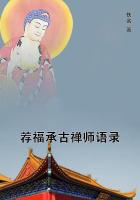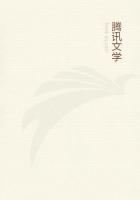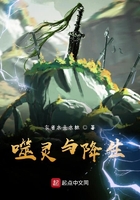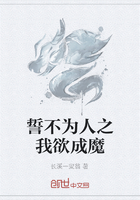In the thirteenth century, King Alphonso III had conquered the kingdom of Algarve in the southwestern corner of the Spanish peninsula and had added it to his dominions. In the next century, the Portuguese had turned the tables on the Mohammedans, had crossed the straits of Gibraltar and had taken possession of Ceuta, opposite the Arabic city of Ta'Rifa (a word which in Arabic means "inventory" and which by way of the Spanish language has come down to us as "tariff,") and Tangiers, which became the capital of an African addition to Algarve.
They were ready to begin their career as explorers.
In the year 1415, Prince Henry, known as Henry the Navigator, the son of John I of Portugal and Philippa, the daughter of John of Gaunt (about whom you can read in Richard II, a play by William Shakespeare) began to make preparations for the systematic exploration of northwestern Africa. Before this, that hot and sandy coast had been visited by the Phoenicians and by the Norsemen, who remembered it as the home of the hairy "wild man" whom we have come to know as the gorilla. One after another, Prince Henry and his captains discovered the Canary Islands--re-discovered the island of Madeira which a century before had been visited by a Genoese ship, carefully charted the Azores which had been vaguely known to both the Portuguese and the Spaniards, and caught a glimpse of the mouth of the Senegal River on the west coast of Africa, which they supposed to be the western mouth of the Nile. At last, by the middle of the Fifteenth Century, they saw Cape Verde, or the Green Cape, and the Cape Verde Islands, which lie almost halfway between the coast of Africa and Brazil.
But Henry did not restrict himself in his investigations to the waters of the Ocean. He was Grand Master of the Order of Christ. This was a Portuguese continuation of the crusading order of the Templars which had been abolished by Pope Clement V in the year 1312 at the request of King Philip the Fair of France, who had improved the occasion by burning his own Templars at the stake and stealing all their possessions. Prince Henry used the revenues of the domains of his religious order to equip several expeditions which explored the hinterland of the Sahara and of the coast of Guinea.
But he was still very much a son of the Middle Ages and spent a great deal of time and wasted a lot of money upon a search for the mysterious "Presser John," the mythical Christian Priest who was said to be the Emperor of a vast empire "situated somewhere in the east." The story of this strange potentate had first been told in Europe in the middle of the twelfth century. For three hundred years people had tried to find "Presser John" and his descendants Henry took part in the search. Thirty years after his death, the riddle was solved.
In the year 1486 Bartholomew Diaz, trying to find the land of Prester John by sea, had reached the southernmost point of Africa. At first he called it the Storm Cape, on account of the strong winds which had prevented him from continuing his voyage toward the east, but the Lisbon pilots who understood the importance of this discovery in their quest for the India water route, changed the name into that of the Cape of Good Hope.
One year later, Pedro de Covilham, provided with letters of credit on the house of Medici, started upon a similar mission by land. He crossed the Mediterranean and after leaving Egypt, he travelled southward. He reached Aden, and from there, travelling through the waters of the Persian Gulf which few white men had seen since the days of Alexander the Great, eighteen centuries before, he visited Goa and Calicut on the coast of India where he got a great deal of news about the island of the Moon (Madagascar) which was supposed to lie halfway between Africa and India. Then he returned, paid a secret visit to Mecca and to Medina, crossed the Red Sea once more and in the year 1490 he discovered the realm of Prester John, who was no one less than the Black Negus (or King) of Abyssinia, whose ancestors had adopted Christianity in the fourth century, seven hundred years before the Christian missionaries had found their way to Scandinavia.
These many voyages had convinced the Portuguese geographers and cartographers that while the voyage to the Indies by an eastern sea-route was possible, it was by no means easy.
Then there arose a great debate. Some people wanted to continue the explorations east of the Cape of Good Hope. Others said, "No, we must sail west across the Atlantic and then we shall reach Cathay."
Let us state right here that most intelligent people of that day were firmly convinced that the earth was not as flat as a pancake but was round. The Ptolemean system of the universe, invented and duly described by Claudius Ptolemy, the great Egyptian geographer, who had lived in the second century of our era, which had served the ****** needs of the men of the Middle Ages, had long been discarded by the scientists of the Renaissance. They had accepted the doctrine of the Polish mathematician, Nicolaus Copernicus, whose studies had con- vinced him that the earth was one of a number of round planets which turned around the sun, a discovery which he did not venture to publish for thirty-six years (it was printed in 1548, the year of his death) from fear of the Holy Inquisition, a Papal court which had been established in the thirteenth century when the heresies of the Albigenses and the Waldenses in France and in Italy (very mild heresies of devoutly pious people who did not believe in private property and preferred to live in Christ-like poverty) had for a moment threatened the absolute power of the bishops of Rome. But the belief in the roundness of the earth was common among the nautical experts and, as I said, they were now debating the respective advantages of the eastern and the western routes.

